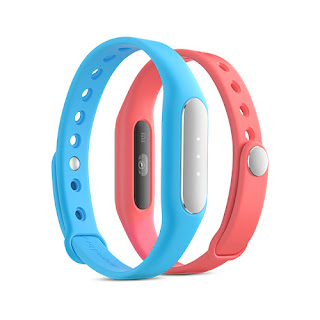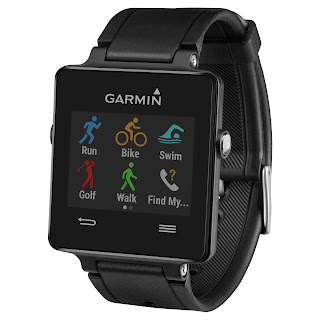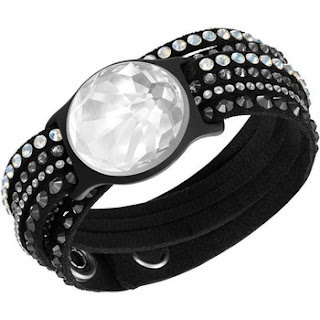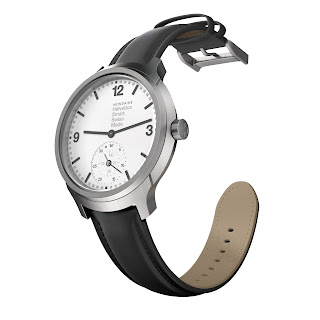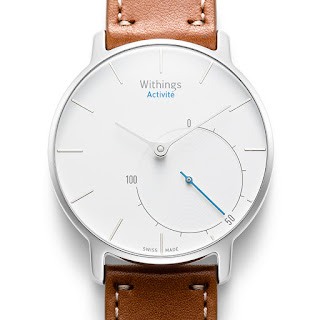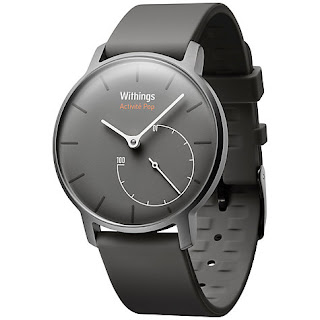Picking out the best fitness tracker is a mind-bogglingly difficult prospect. It's not just about Fitbit and Jawbone anymore. Now everyone wants a piece of the action.
The right activity tracker for you will be based on your individual needs; whether that's accurate step counting, reliable sleep tracking or 24/7 heart rate tracking. There's definitely something for everyone out there.
The new tech and sensors on the latest bands blur the lines even further. From continuous heart rate monitoring like the tech that's found on the Fitbit Charge HR to smartwatch style notifications, there are a dizzying array of features to choose from.
Now that we've had our chance to live with the latest new Fitbits, we've completely reworked our round up of the best fitness trackers and added a new at-a-glance feature list to try and make it easier to spot the right band for you.
Got any questions about fitness trackers? Let us know in the comments section below and we'll see if we can lend a helping hand.
1. Best overall fitness tracker
Fitbit Blaze
The Fitbit Blaze is the company's best looking fitness tracker by a country mile, and while it's not bringing anything groundbreaking to the party, it's proof that Fitbit has not lost touch with what makes a good fitness tracker.
The new colour display is a step up from the Surge's monochrome affair, the software is easy for beginners to get to grips with and it still delivers good all-round activity tracking stats.
Hardcore fitness lovers will be disappointed by the lack of GPS or a heart rate monitor that's built for intensive training. But if you're looking for something that does what a fitness tracker should do best, it deserves to be top of the pile.
Fitbit Blaze: Design
The Blaze seems a lot like the Fitbit Surge with a sleeker, more desirable design that's trying to give the Apple Watch a run for its money in the looks department. We called it bold and it's actually a fairly unisex design.
Fitbit is sticking with the same elastomer band though, which could be an issue for anyone that's suffered the kind of skin irritation issues that many of ourWareable forum users have reported.
Thankfully, there's some room for customisation here with metal, leather and classic bands and stainless steel frames also up for grabs. Bands can be removed using quick release spring bars while the tracker module simply pops out a bit like it does on the TomTom Spark watch.
Fitbit Blaze: Hardware
At the heart of the Blaze is a 1.66-inch, 240 x 180 pixel, colour touchscreen LCD, which gives you more screen estate than the Surge to play with and view stats on, while around the back is Fitbit's own PurePulse heart rate sensor technology to deliver continuous bpm (beats per minute) heart rate readings.
The screen is covered in Gorilla Glass 3.
Disappointingly, there's no GPS on board, so you'll have to piggyback off your phone's GPS to to view routes and record runs. It's also not waterproof, so don't take it anywhere near a swimming pool, although it's fine to get a little wet in the rain or during a sweaty workout.
For activity and automatic sleep tracking, it uses pretty much the same motion sensors we've seen in previous Fitbits. There's a 3-axis accelerometer and gyroscope along with an altimeter to track elevation. There's also an ambient light sensor to help screen visibility and a vibration motor to take advantage of the silent alarms and incoming notifications.
When it comes to the all-important battery life, the Blaze can last up to five days and can be fully charged in around two hours.
Feature check: Step tracking, sleep monitoring, 24/7 heart rate monitoring.
$197.93, Amazon
2. Best for notifications
Garmin Vivosmart HR
Given the company has now started to incorporate optical technology into its running watches, a heart rate monitoring fitness tracker from Garmin was an inevitability. Add to the bpm metrics a pretty nifty notification feature set and you can understand why we're so enamoured with the latest Vivosmart, which does a sterling job at a decent price.
Accurate steps and sleep, resting heart rate and decent notifications all wrapped up into a comprehensive (and complex) app make it a top alternative to the Fitbit Charge HR.
Garmin Vivosmart HR: Design and features
As usual, we'll start off with a dissection of the look and feel. Sure, for many it's the quality of the tech that's paramount, but if we're going to be wearing something 24/7, it has to look good and be comfortable on our wrist.
The Garmin Vivosmart HR is chunky, that's for sure. It's comparable to the Microsoft Band 2 (without the stupid bulge on the strap) and not exactly couture.
The design is black and bland, and it's doubtlessly a piece of tech. It does come in two sizes for smaller wrists, but neither does the job of appearing feminine. The only thing going for the design is that it's so inoffensive it never stands out or jars. It looks relatively sleek and rarely snags or catches on clothing/jacket sleeves. It's also lightweight and you'll easily forget about it.
Another upside is the 5 ATM waterproofing rating, which means it's good for the pool and wearing in the shower.
The screen itself is a 160 x 68 pixel LCD touchscreen with a backlight for reading in the dark that's initiated by covering the screen with your hand. It's basic, but does a decent job of showing your stats with a swipe across the display. The upside, however, is that the time is displayed permanently on the screen, so it does a good job of doubling as a watch.
Feature check: Step and sleep tracking, 24/7 heart rate, smart notifications.
$149.99 | Amazon
3. Best for simplicity
Jawbone UP2
Previously our number one fitness tracker, we still think the UP2 is a great option, but as its rivals start to add more cutting-edge features it's found itself knocked off the top spot.
For under $100, it's still one of the best looking trackers that delivers accurate data and pretty much nails the basics. The UP software is extremely easy to use as well, but it's the data insights that really set it apart from the competition.
We'd still recommend this model over the UP3 because, for the money, it offers much better value than its more advanced bigger brother.
If having a screen is a number one fitness tracker priority for you, but you still want to keep things simple, then the Fitbit Alta is worth considering. It's in the same pricing realms as the UP2 and even gives you the option to switch up the straps for a more customised and stylish look.
Jawbone UP2: Design and features
The Yves Béhar-designed Jawbone UP24 was one of our favourite looking activity bands, with its huge range of vibrant colours and slim design.
At launch its successor came in just two colours – a flashy silver and black. But the September 2015 update brought with it a host of new colours from turquoise (pictured) to purple, as well as a quasi-rose gold called "oat".
The unit itself has a textured aluminium top which merges with a rubber band. This does tend to discolour a little over time.
The strap design looks a little elaborate but is fairly easy to do up, and most importantly, doesn't catch and come undone. It's a bit of a faff to get to the right tightness and it's designed to fit quite loosely, but we found it light and comfy.
Feature check: Step tracking, sleep monitoring, smart alarm.
$49.75, | Amazon
4. Best for accuracy
Misfit Shine 2
When the Misfit launched the Shine back in 2012, it proved that you can count your steps from a fitness tracker that didn't look like an ugly piece of plastic around your wrist.
The Shine 2 remains faithful to those features and now adds a redesigned action clip, smartphone notifications and vibration alerts. Also, the battery life pretty much kicks the ass of any of the trackers on this page.
Where it really impresses though is data accuracy. When we put the Shine 2 up against a GPS running watch recently, there was 0.1km difference in the readings. If reliable data is your priority, then this is the one to go for.
Misfit Shine 2: Features and design
At quick glance, the Shine 2 looks nearly identical to its predecessor. It is a small, metallic disc that is fitted into a silicon band. The most noticeable difference is that the Shine's face is slightly larger and marginally thinner. It's slightly more unisex looking than before as the previous edition could be a a little dainty, especially in a metallic finish.
If you tap the device's face, you'll notice the first major change. The Shine 2 features coloured LED lights and a wider variety of light patterns to help you identify when you've received a phone call, text message, or simply a "get up and move" nudge.
Probably the most interesting and important change in the second-generation Shine is the band. The company has created a special Action Clip (first designed for the Speedo Shine this year) for the back of the band designed to keep it more secure – well, that's the theory anyway.
The Action Clip is a thin plastic strip that attaches to the backside of the Shine and threads through both sides of the band to anchor it in place.
When we first reviewed the Misfit Shine 2 it was still extremely prone to falling out, especially when snagged. Our Shine popped out multiple times during testing, pinging off at an alarming speed. The first time was while boarding a train, and it came perilously close to rolling onto the tracks.
Feature check: Step tracking, sleep monitoring, smartphone notifications, waterproof for swim tracking.
$99.99, | Amazon
5. Best for heart rate monitoring
Fitbit Charge HR
By using continuous heart rate monitoring the Fitbit Charge HR offers more accurate feedback on your activity and overall health than many of its rivals. The OLED screen will show off your daily stats, as well as caller ID from your smartphone, and the app is brilliant for beginners.
Fitbit Charge HR: Design
The Charge HR is available in a range of colours – black, plum, blue, teal and tangerine. The screen matches the colour of the band too, so it doesn't stick out like a sore thumb. Unfortunately the black version is so anonymous it rarely attracts questions or comments – genderless would be a better description than unisex.
That screen is a monochrome OLED display and it's fairly vibrant and easy to read, despite being absurdly small. Press the button to cycle though the time, daily steps total, distance travelled, calories, flights climbed and of course your heart rate.
The clasp is a normal watch affair, with a standard small buckle and a rubber strap.
Now, users initially complained of skin irritation issues, which we reported on last year. Fitbit's response was to urge users to take breaks from their band and to keep it clean.
Unfortunately, I followed that advice and still suffered some irritation after bouts of exercise. It's not an problem unique to Fitbit, but this is probably as bad as I've experienced. That said, editor-in-chief Paul suffered no irritation at all, so we'd just recommend that anyone with remotely sensitive skin think carefully before they buy.
Other than the mild scabbing, the Fitbit was actually comfortable to wear. It doesn't feel like a set of medieval leg irons, like the Microsoft Band, and it was comfortable enough to sleep with.
Feature check: Step tracking, sleep monitoring, all-day heart rate tracking, stopwatch mode for workouts, resting heart rate tracked over time.
$126.39, | Amazon
6. Best for sleep tracking
Jawbone UP3
We talked and Jawbone listened. After receiving mediocre reviews for the Jawbone UP3, the San Francisco company went live with new firmware addressing a number of the key concerns – and automatic sleep tracking is now on offer. That's great news because the UP3 is incredibly in-depth when it comes to tracking your ZZZs. By monitoring a user's bpm, respiration rate, body temperature and galvanic skin response, it can give you your REM, light and deep sleep stats.
Jawbone UP3: Design and fit
Jawbone has again turned to Swiss designer Yves Béhar for the design of the UP3 – the same chap who came up with the flexible fit of the UP24. Unlike its predecessor though, the UP3 is a one-size fits all affair that looks more 'jewellery' than 'gadget'.
It's definitely a lot more svelte than the UP24, with a moveable clasp meaning a better, and ultimately more comfortable, fit. The slim durable anodized aluminium framework (less than 0.5% nickel, so hopefully no rashes) surrounded by a hypoallergenic TPU rubber strap works well and, despite having to wear the UP3 tight in order to get the most accurate sensor readings (more on that later), it never really caused any irritation.
The dimensions are 220 x 12.2 x 9.3mm and it weighs 29g, making it Jawbone's thinnest and lightest tracker so far. And it looks pretty slick too. It won't rival the latest smart jewellery trackers in terms of a wow-factor but the basic design – especially on the all-black affair we were reviewing – lends itself well to a range of styles; it looks just as at home paired with a suit as it does with a pair of shorts and a t-shirt.
Feature check: Heart rate (resting and passive), steps, sleep.
$88.95, | Amazon
7. Best for ecosystem
Under Armour Band
The Under Armour Band didn't exactly blow us away in our recent review, but it shows promise. Yes the screen is terrible and it didn't play nicely with its ownUA HealthBox heart rate accessory, but there were upsides. The UA Record app is fantastic, and probably the best place to start recording your health data. If you're willing to put up with a mediocre experience today, you'll reap the benefits in the future.
Under Armour Band: Design
Straight out of the box the Band has a simple, inoffensive charm about it. It's the Grip evolved but there are some clear changes here. Some good, some not so good. The clasp is now a more simple setup, as Under Armour and HTC decided to ditch the Nike Fuelband-style charging connector and clasp in one.
The smooth finish on the band has gone too, replaced with an attractive textured finish that feels more in keeping with rival sportier-looking fitness trackers. It's water resistant up to two metres, but before any swimmers get excited, we'll warn you that the UA Band isn't designed to be used in the pool.
Under Armour Band: The app
The Under Armour Record app is the standout feature of the Band. If Under Armour and HTC decide to make another wearable (which I'm sure they will) then they'll have the software foundations to rival the Fitbits and the Jawbones of this world.
It's available on Android and iOS and there's plenty of third party app and device support. Head into the Manage App & Devices section of the app and you'll see a list that includes Jawbone, Fitbit, Misfit, Polar, Suunto and more. That's not forgetting that Under Armour now owns Endomondo, MapMyFitness and MyFitnessPal, the latter of which is deeply integrated into the Record app.
Feature check: Optical 24/7 heart rate, steps, sleep, workout tracking.
$159.99, | Amazon
8. Best for running
Microsoft Band 2
Design is what let down the previous Microsoft Band – and while the new device has benefited from a substantial rethink, it's still not the slickest or most comfortable activity tracker to wear. But the spec sheet is streets ahead of most of the activity band brigade, and it's running with GPS connectivity that impresses the most. We tested the Band 2 over several runs, against dedicated GPS running watches, and the biggest discrepancy was 190m on a 10km run.
Microsoft Band 2: Design and comfort
It was design, not features, that let down the previous Microsoft Band. And while the new device has enjoyed a substantial rethink, it's still not the slickest, or most comfortable activity tracker to wear.
It definitely looks cooler - a kind of hybrid of the first Microsoft Band and the Samsung Gear Fit - but it's still a chunky monster and, compared to its rivals, looks a lot more 'gadget' than 'accessory'.
Microsoft Band 2: Display
The curved display is nice though. It' a 32 x 18mm, 320 x 128 pixel AMOLED one covered in Gorilla Glass – that's a ppi count of 255 and all-in-all, it's a comprehensive improvement on the TFT panel found on the original.
It's also a world away from the monochrome displays of many of its rivals and it makes the Band 2 much more of a smartwatch hybrid (more on that later) than anything offered up by Garmin, Fitbit, Jawbone and co.
Feature check: Accurate run tracking, steps, sleep, GPS sports tracking, 24/7 heart rate, golf, notifications.
$214.99, | Amazon
9. Best for swimming
Moov Now
Moov Now is a small, round element that you clip into a strap to wear around your leg and pair with a smartphone. The aim of the game is advanced sports training plans, at which it excels, with actionable running, swimming and cycling data aimed at making you better at the sports you love.
The good news is that Moov Now – the second generation product – also works as a daily step and sleep tracker, making it a decent activity band when you're not busting out interval times.
Moov Now: Sports coaching
Where Moov has always excelled is sports, and it's important to emphasise the coaching element. A running watch is not a coach; it will not make you a better runner.
Running and cycling get the most coaching, while swimming and boxing sessions are tracked and reported. Finally the app will guide you and count reps for 7 Minute workouts, helping you progress from level to level as you get stronger.
Moov features a host of training plans designed to help you achieve goals and then uses a voice coach to affect your performance in real time. And in this regard, it's the leader out of a handful of similar products.
When you go out for a run, you can choose training plans from running efficiency, intervals and open training. These are given clear and beneficial names such as 'help me run farther and easier', 'improve my pace and distance' and 'push me to the limit.' It's the stuff hardcore runners want, and presented in a way that's not scary for newbies. It's a great selection of training plans, for all levels of ability.
When you head out for a run, the voice coach will explain what you're trying to do, and then keep tabs on the metrics and tell you when you're getting it right – and more importantly, how you can do it better.
Feature check: Steps, sleep, advanced sports coaching, run/bike tracking.
$59.99, | Amazon
10. Best for a tight budget
Misfit Flash
While the Jawbone UP Move we've highlighted further down is a superb budget fitness band, so is its rival the Misfit Flash. Packing the exact same tech as the more expensive Misfit Shine/Swarovski Shine, the plastic Flash tracks steps, sleep and swims extraordinarily well and comes in a vibrant array of colours to suit all tastes.
Misfit Flash: Features and design
When you take your flagship product and halve the price, build quality is usually the first casualty – and the Misfit Flash is no exception to this rule. Plastic prevails over metal and the curiously attractive metallic, er, shine of the Shine is replaced by dull matte finish on the Flash.
The good news for design aficionados is that Misfit has released the Flash with a series of bright and bold colours, which makes choosing your ideal band a little more personable. They seem to be aimed at the younger audience, as few of the choices naturally pair with business wear.
The design differences aren't all cosmetic, however. Misfit identified that the Shine's strap was inadequate for holding the unit in place, and that the touch-sensitive face for accessing goal progress and the clock was frustrating to use – so these have been addressed. The surface is now a physical button with brighter LEDs, and the Flash slips into the back of the strap, meaning it can't fall out.
Misfit Flash: Activity tracking
In terms of activity tracking, the Misfit Flash certainly does more than your average fitness band.
First up is steps and sleep tracking, which is the standard fare of any activity tracker in 2014. We found both to be extremely accurate, tracking inline with other wearable devices, such as the Withings Pulse Ox and Pebble smartwatch (using the Misfit app).
Sleep tracking is automatically detected, so there's no need to remember to switch on a sleep-tracking mode, as with competitors such as the Withings Pulse.
Feature check: Steps, sleep, long battery life, swim-proof.
$29.99, | Amazon
Xiaomi Mi Band Pulse
Now available outside of China, the Mi Band Pulse is cheap and cheerful, yet somehow manages to pack heart rate monitoring onto the wrist for an astonishing price. Xiaomi has shifted over a million of its bands in China alone, possibly making this the ultimate fitness tracker.
Xiaomi Mi Band Pulse: Tracking
The Mi Band Pulse tracks steps, distance and estimates calories/grams of fat burned, just like the first Mi Band. It also breaks your walking and running into blocks of active time and presents hourly, daily, weekly and monthly graphs.
In general the Mi Band Pulse, like the first one, tends to overestimate steps – and so, everything else – and I did still tend to find entries in the Mi Fit app timeline that had me covering 1.7km when I know I walked about half that distance then sat at my desk for half an hour.
Xiaomi Mi Band Pulse: Heart rate tracking
The new optical heart rate sensor, which uses photoelectric light perception, is what separates the Mi Band Pulse from rival budget trackers. It helps with the sleep tracking, like I said, and I can vouch for the fact that if you wake up in the middle of the night, you might see its green light blinking.
For on the spot readings and keeping an eye on your resting heart rate, the Mi Band Pulse is accurate enough. It takes a good 20–30 seconds to fire it up but when it does, I found that its readings were accurate to within 5–10 bpm even when compared with a chest strap (more on that in a second).
That said, in the Mi Fit app itself, bpm readings are presented in a list with the date, time and "slow", "fast" or "normal" which isn't very useful at all.
Feature check: HR tracking, steps, sleep, smart alarms, incoming call alerts.
$25.79, | Amazon
11. Best for multisports
Garmin Vivoactive
This everyday sports wearable blends fitness and sports features with reliable notifications in a reasonably priced package. It's not exactly a looker, but don't let that put you off – the Vivoactive uses GPS to accurately track running, cycling and swimming with live pace and distances. It's not perfect – the screen is dull and the sleep tracking is awful – but as an easy to live with sports companion with access to Garmin Connect, this is a brilliant buy.
Garmin Vivoactive: Features
Before getting into the nitty gritty of the Vivoactive, it's worth running through its impressive array of features.
First, as you'd expect from a Garmin device, it features a variety of sports tracking features– and with the addition of GPS, it's a powerful proposition. That means that running, cycling, walking and swimming are all tracked, and with the accuracy of a GPS system. No accelerometer guess work, proper tracking from the best in the business.
A big draw for many will be the addition of golf tracking. Using the built in GPS and Garmin's gigantic repository of 38,000 courses, you can get a stripped back version of the company's golf watches, with yardages to the front, centre and back of the green.
That sums up the features of the Vivoactive in a nutshell. It's like a stripped back version of Garmin's huge range of dedicated sports wearables, all rolled into one. A jack-of-all-trades that does the essentials, which for most people, will be completely sufficient.
Feature check: Daily steps, GPS run/bike/golf tracking, notifications.
$174.94, | Amazon
12. Best for bling
Misfit Swarovski Shine
The Swarovski Shine could be the ultimate ladies' fitness tracker. Hidden behind that Swarovski crystal are all the tracking smarts you could ask for, and there's also a range of accessories from bracelets to necklaces. The tracker comes with a sports strap as standard to track running, cycling and swimming.
Swarovski's CEO has teased a solar powered fitness tracker for 2016, offering infinite battery life, plus the purple colour.
Misfit Swarovski Shine: Design and build
When we talk about wearable tech disappearing, we don't mean making devices smaller and thinner and lighter to the point they're useless. We mean making what we already wear smart.
So while the Misfit Shine and Flash do a decent job of looking inconspicuous on the wrist, the Swarovski Shine demands attention. The large, but very light, crystal is delightfully glinty and depending on which accessory you choose, there's plenty more sparkle.
We've been wearing the cheapest accessory in the range, the Slake bracelet in black Alcantara fabric - it feels like suede and it's comfortable to wear but it's pretty full on, especially in the day. Misfit is selling the Shine in sets which come with a sports band. Bear in mind that combined with one of these, the tracker is water-resistant but we wouldn't recommend taking your bejewelled band to the pool.
Also available are the more subtle Vio, Sirora and Lisea pendants and blingy Piofiora, Cardoon and Cleyera wristbands in a range of prices starting at $69 per accessory. All set with Swarovski crystals of course. The idea is that you can buy bands and necklaces to suit every occasion which is exactly the kind of system which will appeal to fashion-conscious women who don't want to get stuck with a coloured fitness band. Though at these prices, it's quite an investment to get the set.
Feature check: Daily steps, sleep monitoring and calorie counting.
$249, misfit.com
13. Best for style
Mondaine Helvetica No.1 Smart
Mondaine watches are gorgeous and the MotionX tech packed inside the company's first connected timepiece hasn't altered that fact. It's simply stunning, easily the best-looking piece of wrist-based wearable tech that we've come across.
It could have fallen flat on its face if the fitness tracking aspects weren't up to scratch but Mondaine avoided that embarrassment by enlisting the Silicon Valley experts and, while it's expensive, you're paying for solid Swiss-made quality.
Mondaine Helvetica 1 Smart: Features
At the bottom of the watch face is the secondary dial that offers an at-a-glance look at your progress against your daily goal. Unlike the Withings Activité, however, things are a bit more detailed than just a goal percentage.
The big grey hand points to the current day of the month, while the second smaller hand rotates to show your step goal percentage. However, when you go to sleep, the date hand will move to the sleep position, and the second hand will turn to reveal the percentage of sleep. What's more, you can tweak the settings to enable the watch to track sleep from lying under your pillow, rather than on your arm, if you don't feel comfortable wearing the heavy metal watch to bed.
Sticking with the sleeping features and the Mondaine Smart offers details on your deep and light sleep, the amount of time you were awake, and a count of the times that you awoke from the land of nod. However, you have to manually enter sleep mode, either by pushing the dial on the watch or by selecting the mode in the app.
Smart alarms are on offer, however, to wake you during periods of light sleep and there's also a handy power nap mode for daysleepers.
In terms of activity tracking, the usual fitness tracker mix is on offer: steps, calories and distances. As with any algorithmic metric calculation, there's an element of trust that the device is counting in the realms of accuracy but, compared to both a Fitbit and a Garmin fitness tracker, we found the Mondaine pretty much on the money.
Feature check: Steps, sleep, long battery life.
$692.25, Amazon
Withings Activité
Slightly cheaper is a double header of Withings tech. The Withings Activité is the jewel in the wearable crown, packing step counting, distance checking and sleep tracking into a Swiss-made analogue watch that frankly looks glorious. It even comes with a sports strap for the pool, making it as adept for workouts as it is in the boardroom.
A word to the wise: the Withings Activité Steel has just been released, which brings a premium build at a lower price. Well worth considering.
Withings Activité: Features
When it comes to features, the Withings Activité has more in common with the Fitbits and Jawbones of this world than Pebble or the Moto 360. There are no notifications here and no screen either, and the watch itself packed with sensors that relay information to your smartphone.
The Withings Activité comes with a small tool, which you use to access a tiny button on the back. A long press puts it in pairing mode, which you sync using the Withings Health Mate app.
As soon as you pair, you're asked to set the time. Unlike normal analogue watches there's no movement inside the Activité keeping time; it's a digital watch operating analogue hands, and in that vein is quite unique. To set up, the app asks you to ensure the hands are pointing at 12, which means the software and watch hands are in sync. When you confirm the watch will sync with your phone's time. There's now no loss of time and no need to change your watch when you go abroad.
The Activité will now go about its business of tracking your life.
The step tracking is done through an accelerometer in the watch, there's no GPS on board. Using that, it will gauge the distance covered, elevation climbed and the calories burned by your activity.
Feature check: Steps, sleep, calories, alarm.
$449.99, | Amazon
Withings Activité Pop
If you don't fancy splashing out in excess of three hundred notes for a tracker, the Withings Activité Pop could be the answer to your prayers. Packing the same smarts as its big brother, plastic replaces metal and China replaces Switzerland for this bargain tracker that will turn heads for all the right reasons.
Withings Activité Pop: Features
The functionality of the Pop is exactly the same as its more expensive namesake, with fitness and sleep tracking on board, and it uses the same Withings HealthMate app – but more on that later.
Setup is a doddle - the watch pairs to the app and sets the time automatically based on your smartphone. There is a calibration process to go through – to make sure the hands are all in the right places – but it's really straightforward. The reason for this is it's actually a digital watch powering analogue components. The Pop knows how to move its hands at the right pace, you just need to get them in the right place to begin with.
A cool sidenote - if you change time zones while wearing the Pop, it automatically resets itself. It does this using your phone's time setting though, so don't expect it to change mid-flight if your mobile is on airplane mode.
Feature check: Step counting, sleep tracking.
$144.91, | Amazon
14. Best clip-on activity tracker
Jawbone UP Move
Not everyone wants to wear a tracker on their wrist, which is where the Jawbone UP Move comes into its own. Steps and sleep are catered for, and a tap of the button will set it into a dedicated tracking mode, which you can later assign to a dizzying list of sports from running to yoga and Zumba.
Jawbone UP Move: Features
So what can this budget band or cut-price clip do?
There are three modes to the Jawbone UP Move, which can be set from both the module itself and the band – activity tracking, stopwatch and sleep.
The default mode is standard activity tracking, and the UP Move will monitor your steps, distance walked, calories burned, active time, and idle time. It does this using a tri-axis accelerometer, which isn't the most advanced sensing tech, but enough to make decent guesstimates of your activity.
The second mode is the stopwatch feature, which enables you to specify to your UP Move when you're about to start an activity. Jawbone supports the logging of a huge array of sports from cycling and cross-training to Zumba and football. When you're about to start playing just enter stopwatch mode, and then you can assign that activity later.
If you forget to put your band into stopwatch mode that's fine. It will highlight periods of activity that you can tag later. However, if you go to the gym and do 30 minutes of cycling, 10 minutes of running and 30 minutes of weights, it will see that as one singular period of activity and you won't be able to assign sports in detail. That did become a little fiddly in the gym, remembering to start and stop between activities, and we didn't make it through one session without blending the activities into one.
The final mode is sleep tracking. You have to invoke the sleep-tracking mode for it to keep tabs on you – something that's done automatically on the Misfit Flash. Without automatic sleep tracking you have to remember to set it, or there will be holes in your data.
You switch between modes in two ways: Firstly, by using combinations of taps and presses on the unit's button, which we found slightly baffling. We could never quite remember which combo was which and found ourselves enabling sleep tracking as we were about to hit weights in the gym. That meant we resorted to the second method: doing it from within the app.
There are several other features buried into the app. The first is a prompt to get up and move about if you're too sedentary, and the second is bedtime reminder – in case you're the sort of night owl that's permanently tired because you forget to go to bed.
The features on offer rival any of the bands from the past year, and while the premium trackers of 2015 are set to use far more advanced tracking, all the basics are adequately covered.
Feature check: Steps, sleep, basic sports tracking.
$29.95, | Amazon

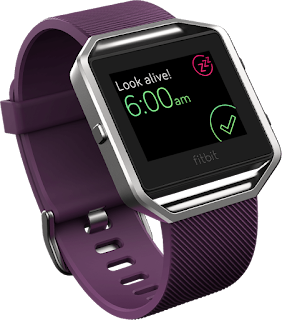
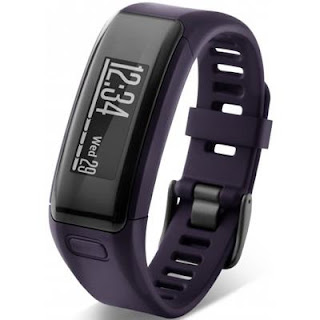
![Misfit Wearables Shine 2 Fitness Tracker & Sleep Monitor (Carbon Black) [New 2016 Edition] Misfit Wearables Shine 2 Fitness Tracker & Sleep Monitor (Carbon Black) [New 2016 Edition]](https://blogger.googleusercontent.com/img/b/R29vZ2xl/AVvXsEjZjeVj4-Qq-cnAGVTxv4CWlXCgJLpQL-CHnUTDpr3-I9X3weYEtjymx9cO0YizH8hzSZW9U06I0cAYS3uAX6rR6k6ek0H_QxiweZRc3NUo3IsPVqYc-iTkgG1JBt8witJpXkVNw63k_e8/s320/Shine_2_main.png)
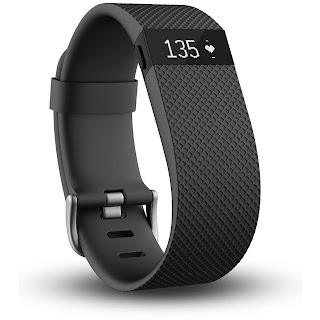
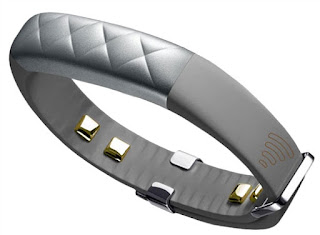

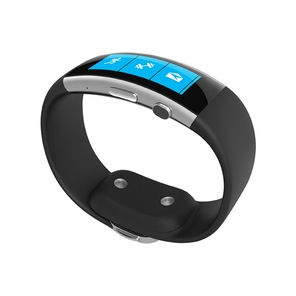
![MOOV NOW - 3D Fitness Tracker & Real Time Audio Coach (Stealth Black) [New 2016 Edition] MOOV NOW - 3D Fitness Tracker & Real Time Audio Coach (Stealth Black) [New 2016 Edition]](https://blogger.googleusercontent.com/img/b/R29vZ2xl/AVvXsEh67EasQ1VZS_0my_mxZRwgxyBmD2umWpr4RAT9tvI35-l1SlgDeZu4VdqxQlZspIFwYnMzHoeTaPFqdJwd5BK999GxW7LKKqA51Dk-Gu64g_Ch73jhu2iI04t089NNI0rCs6nuLYlCNao/s320/moov-now.jpg)
